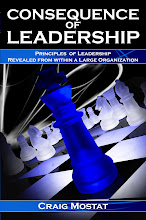Whether your employees are 17 or 50 years old, a suggestion program is a great method for soliciting the great ideas that are within the loyal employees of your company. These kinds of programs – used properly - make everyone feel like a partner, and help to engage the entire organization. However, these can't simply be superficial – lip service types of programs. Only leaders that actually want to hear the suggestions and ideas of their employees should attempt to start and utilize a suggestion program. In fact, a suggestion program ignored can do more harm than good. Very careful consideration should be given to the idea of a suggestion program. Using this as a "political correctness" tactic will come back and bite you – you can't fake this:
- Instituting a program to solicit the ideas and suggestions from your employees sends a message – a good message.
- Not listening or utilizing any of those ideas after instituting the previously mentioned program also sends a message – not so good.
- Terminating a suggestion program sends the worst possible message to your organization.
Leaders that are not ready to listen should completely avoid these, and continue to completely rely on their own genius. I recently heard a quote from Andy Stanley: "Leaders who are not interested in listening to what other people have to say, will eventually find themselves surrounded by people who have nothing to say." How true this is, and as this type of leader gets their wish, the impact on the organization is dire. Depending on their position, these conceited leaders harmfully shift the entire culture of the enterprise, and are often not identified and replaced until it is too late.
I cannot think of any downside to actively soliciting ideas and input from your team. Beyond the benefits already mentioned, here are some famous examples of what partnering with employees has manifested.
- The 1965 discovery of NutraSweet, a billion-dollar low-calorie sweetener product, would never have happened if it were not for a creative employee at Searle Pharmaceutical Company. A research scientist named Jim Schlatter was working on a new anti-ulcer drug. Some flecks of a solution splattered onto his bare hands and the drops didn't really register in his consciousness. He later licked his finger to separate some paper and noted an extremely sweet taste. He retraced his steps to identify the source of the amazing taste - a taste 200 times sweeter than sugar. The chemist shared this information with two other friends and the three knew they were dealing with something very important that could compete with the two other sweeteners on the market: saccharin and cyclamate. Schlatter's efforts and suggestion are responsible for one of the most profitable products in the company's history (Corporate Creativity: Robinson & Stern, 1998).
- Ian Hart, a British Airways baggage handler initiated an idea that reduced the average time for first-class luggage to arrive at the carousel from 20 to 9 minutes, 48 seconds, with some routes regularly achieving 7 minutes. In 1994, his idea was awarded the Chairman's Customer Service Award of the Year, and Hart received £11,000 (about $18,000) as well as two round-trip Concorde tickets to the United States(Corporate Creativity: Robinson & Stern, 1998).
- At the historic El Cortez Hotel in San Diego engineers had drawn up plans to install an additional elevator that would require closing the hotel for several months. A janitor, concerned about the mess this would create, as well as the jobs lost while the hotel was closed, offered a suggestion to build the elevator on the outside of the hotel instead. The engineers agreed and the El Cortez became the first hotel to give visitors a bird's-eye view of beautiful San Diego Bay as they ascend to their rooms. Today, outside elevators are an admired mainstay of some of the world's poshest resorts (The Power of Small: Why Little Things Make All the Difference By Robin Koval, Linda Kaplan Thaler, 2009).




No comments:
Post a Comment